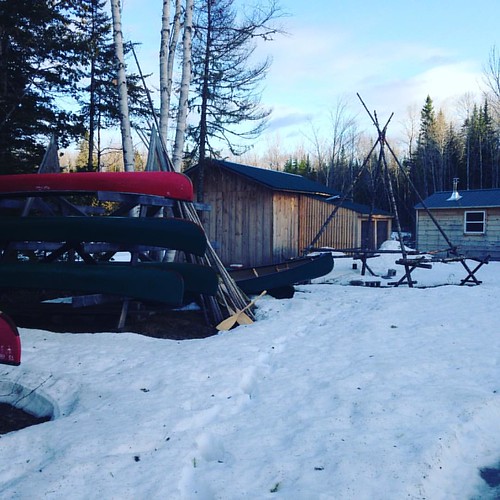Corn Smut Fungus U. maydis cells assemble three different septin structures Many studies addressed the subcellular localization of septins in a wide range of fungi and animals. A recent review made the interesting proposal that subcellular septin localization falls into variations of three distinct patterns, which correlates with the proposed function: localization to partitions, to projections or to whole cells. The structures we found in U. maydis fall into the two last patterns: two of them are located at projections – either the base of the bud or at the tip of the bud- and the third one is located as a septin fiber throughout the whole cell. Since U. maydis divides by budding, the finding that septins localized at the bud neck was somehow expected. We found that the four septins localized as a tight ring that appeared just before bud emergence. The bud then grew out through the septin ring, which later on appeared as doublet and finally decreased in intensity concurrent with mother daughter cell separation. A recent report showed that in U. maydis, this septin structure at the bud neck was controlled by the kinase Don3, a master regulator of cytokinesis in U. maydis. Therefore, we assumed that the main role of septins located at the bud neck has to be related to cytokinesis, playing a similar role as it does in S. cerevisiae. Localization Number of cells wt sep2D 0 0 0 0 100 sep3D 0 0 0 0 100 sep4D 63.260.8 50.461.2 0 3.161.9 33.762.4 Bud neck Bud tip Nuclear mislocalized1 Non-specific2 72.261.2 36.561.7 0 0 27.861.2 A total of more than 100 cells per experiment were counted per each mutant phenotype. 17460038 1 Accumulation of signal outside of bud neck, bud tip or nuclear localization. For instance in cell walls. 2 Diffuse signal in cytoplasm. doi:10.1371/journal.pone.0012933.t001 conclusions and places them in INCB024360 web context with other works addressing the role of septins in fungal morphogenesis and virulence. 9 September 2010 | Volume 5 | Issue 9 | e12933 Septins in Corn Smut Fungus Localization Number of cells wt sep1D 2.860.7 38.160.6 0 21.261.8 40.762.2 sep3D 4.960.1 2.460.8 93.361.7 0.760.9 1.161.2 sep4D 72.761.0 33.760.2 0 0 27.362.0 Bud neck Bud tip nuclear mislocalized1  Non-specific2 70.461.4 41.661.7 0 0 29.661.9 A total of more than 100 cells per experiment were counted per each mutant phenotype. 1 Accumulation of signal outside of bud neck, bud tip or nuclear localization. For instance in cell walls. 2 Diffuse signal in cytoplasm. doi:10.1371/journal.pone.0012933.t002 Less expected was the localization of septins as a band-like structure behind the bud tip. Although this localization has been described in some mutant backgrounds in S. cerevisiae, in wild-type conditions it has been described at the tip of filamentous fungi such as Aspergillus nidulans and Ashbya gossypii as well as at the tip of the germ tube in C. albicans during dimorphic switch. It is worth mentioning that bud growth in U. maydis is supported by a continuous polar growth during G2 phase in contrast to the isotropic growth observed during G2 phase in budding yeast. In this sense, bud growth in U. maydis resembles filamentous fungi tip growth. We believe that 16985061 the apical localization of septins in U. maydis reflects a role of septins in the polar growth machinery of U. maydis. It is thought that during filamentous growth, septins may play a role by facilitating the organization of specific plasma membrane domains, such as sterolrich lipid rafts. Interestingly, previ
Non-specific2 70.461.4 41.661.7 0 0 29.661.9 A total of more than 100 cells per experiment were counted per each mutant phenotype. 1 Accumulation of signal outside of bud neck, bud tip or nuclear localization. For instance in cell walls. 2 Diffuse signal in cytoplasm. doi:10.1371/journal.pone.0012933.t002 Less expected was the localization of septins as a band-like structure behind the bud tip. Although this localization has been described in some mutant backgrounds in S. cerevisiae, in wild-type conditions it has been described at the tip of filamentous fungi such as Aspergillus nidulans and Ashbya gossypii as well as at the tip of the germ tube in C. albicans during dimorphic switch. It is worth mentioning that bud growth in U. maydis is supported by a continuous polar growth during G2 phase in contrast to the isotropic growth observed during G2 phase in budding yeast. In this sense, bud growth in U. maydis resembles filamentous fungi tip growth. We believe that 16985061 the apical localization of septins in U. maydis reflects a role of septins in the polar growth machinery of U. maydis. It is thought that during filamentous growth, septins may play a role by facilitating the organization of specific plasma membrane domains, such as sterolrich lipid rafts. Interestingly, previ
